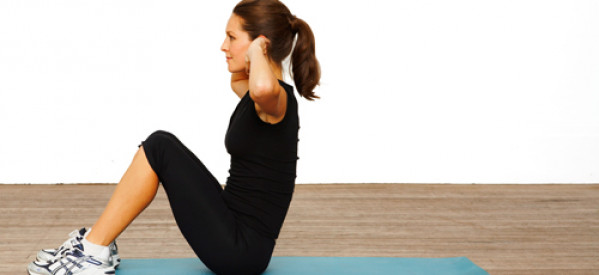Belly After Baby: How to Get Rid of Your “Mummy Tummy”

If you’re a new mom, no doubt you’re wondering when and how (or if!) your belly will be flat again.
Is it crunch time? No! It turns out that crunches can be harmful to both your belly and your back. To understand why, here’s an overview of how abdominals work:
Abdominals 101
We have three layers of abdominals:
* The Rectus Abdominis
This outer muscle supports your back and organs. During pregnancy the rectus abdominis both stretches and separates.
When the muscles separate, it is called a diastasis recti or separation of the recti muscle. This separation weakens both the support for your back (causing back problems) and the support for your organs (causing the “mummy tummy”). Since the connective tissue joining the muscles stretches sideways, your organs are now being supported by a thin piece of connective tissue. So those protruding bellies are really your organs not being supported effectively!
Pregnant again? Women show faster in their second pregnancy due to the separation of these muscles. This separation will get larger with each pregnancy, although specific exercises can help close it.
The Obliques
These middle layer abdominals run diagonally down the sides of your body and connect with the recti muscle. Because of this connection, any forward moving action of the obliques will create a shearing effect on the recti muscle and will make the separation larger.
What to avoid: Exercises and activities that have a forward crossover movement (like tennis), will make the separation larger and should be avoided until the diastasis is closed.
The Transverse Muscle
This is the muscle trainers are talking about when they discuss working your “core.” It is like a corset and wraps around the whole body, and connects to the recti muscle as well. The movement of this muscle is forwards and backwards (it is the muscle we use while breathing). Isolating the transverse muscle is the basis for the Tupler Technique!
So, Why Don’t Crunches Work?
The action of crunches causes the middle of the recti to go forward forcefully. This forward forceful pressure on the weak spot of the connective tissue (belly button) will make the diastasis larger if you already have one… or will create one if you don’t.
In a backlying position, when the shoulders come off the floor, it is physically impossible to hold the transverse in. And, when the shoulders come off the floor, not only can you not engage the transverse muscle but it also bulges the disks of the spine in the wrong direction. So that is why crunches are harmful for the belly and the back.
How to Fix a Diastasis (and Lose that MummyTummy!)
The most important thing you need to do is strengthen the transverse muscle in a sitting position. This is the missing link in all abdominal work!
You can do one of the seated exercises (called the elevator) while watching TV or driving in a car. (Just make sure your back is supported and does not move while doing the exercises.)
- Put your hands on your belly so you can tell that the muscles are going back towards your spine.
- Now imagine you are bringing your belly button to your inner spine.
- Hold it there for the count of 30. Count out loud as it forces you to breathe.
- Now close your eyes and imagine that your belly button is going from your inner spine to your outer spine. It is a little isometric squeeze.
- After you squeeze remember to keep it at your inner spine.
- Do 10 of these little squeezes as you count out loud.
- End with a big belly breath.
(You should feel this in your back.) Do 10 of these exercises every day.
Other Tips
Closing a diastasis is a 4-step program. Here are some things to focus on…
- Do the proper belly exercises (such as those found with the Tupler Technique).
- Wear a splint under your clothing every day, such as the AbRehab splint (embed link). The purpose of splinting is to pull the muscles together – this makes the exercises more effective and also helps heal the connective tissue.
- Engage (or properly draw in) the transverse muscle during every activity.
- Get up and down correctly from a back-lying to seated position: Roll on your side and use your arms to help push you up.







Ashley - Embracing Homemaking
Wonderful tips! Thank you!